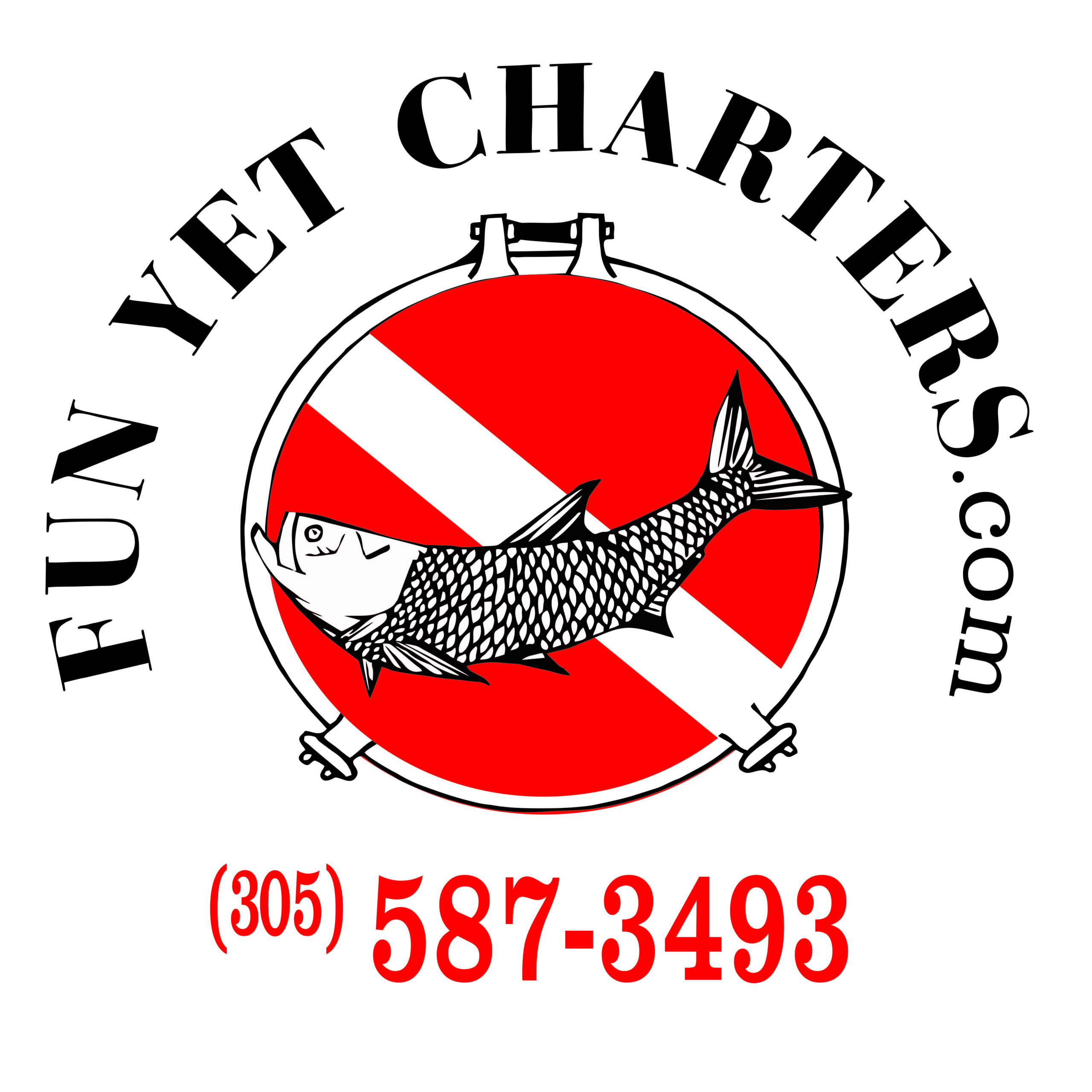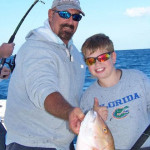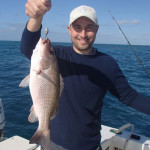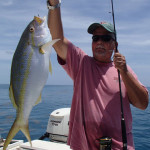April in the Florida Keys is positively the worst month in the year for the ADD afflicted angler. The fisheries that are open to anglers are more numerous now than at any other time of year. Trying to decide what to pursue is enough to make your head pound. It doesn’t matter if you prefer the back country or the far offshore waters, this is the one month that has the largest concentration of EVERYTHING.
Sorry for shouting out everything, but that is the truth. On the flats there are bonefish, tarpon, permit, barracuda, and shark. Inshore channels will have tarpon, snapper, cobia, shark, trout, ladyfish, and mackerel. The reef is loaded with all manner of snapper and grouper. (Sorry for the ill-advised closure for one more month on the grouper; however, they are there in number. Unfortunately, the governmental powers that be rarely listen to my opinion.) Cero and yellow jack are also likely to show up in your chum line. The offshore wrecks are loaded with mutton snapper, amberjack, almaco, African pompano, blackfin, barracuda, and shark. Trolling offshore produces dolphin, wahoo, tuna, king mackerel, and sailfish.
It is a list that is too much for an ADD afflicted angler like myself. Choosing what to pursue is more often a factor of what the whim of the weather will allow your vessel to handle, rather than what species is most likely to cooperate.
When the wind decides to blow a seemingly relentless twenty knots out of the east, most of the small craft will be relegated to the channels that carve their way through the Lower Keys. It is easy to find a sheltered channel to set up a chum line in and have a blast with snapper while waiting for something with serious rod bending potential to make an appearance. Just remember to keep a few larger baits soaking at all times so as not to miss out on opportunities that arise.
When the bluebird days arrive, get out past the reef and take advantage of some of the largest dolphin that cruise the Gulf Stream. This time of year it takes a fish of over forty pounds hitting the docks to get a rise out of the seasoned skippers in the Keys. The majority of the larger fish will be found cruising down sea chasing flying fish, and are easily spotted under the terns and frigate birds trying to intercept the flying fish before they crash back into the water.
Dragging bait from one offshore wreck to another by way of your down rigger is a great way to connect with wahoo. As you go over each wreck, check your depth finder for suspended fish. If you mark a school, go around again and drop a vertical jig. Work it from the bottom to the top. My instructions to my anglers as to how to work the jig are to “raise the rod like you are setting the hook, and reel like mad as you lower the rod.” This action is repeated all the way to the surface. When over the wrecks, there are fish to be found from right on the bottom (grouper and snapper), through the area just over the wreck tops (amberjack, almaco and African pompano), all the way through mid water to the surface (mackerel and blackfin tuna).
In the rare instance that the offshore waters fail to produce, you can always go back to the reef. Here, the patches are sure to offer action for the prepared angler. Never leave the dock without a few blocks of chum on board and you will always have a viable option to fall back on. Even if you are foolish enough to venture out without a livewell full of pinfish, you can always cut the fresh ballyhoo that you used to troll with into tasty plugs to tempt even the most jaded of snapper.
It makes my head hurt just thinking about what to do next. Fortunately, there is time in the month to do it all. Also, fortunately for me, this ability to bask in the glory of variety is all that keeps my feeble brain from exploding.




